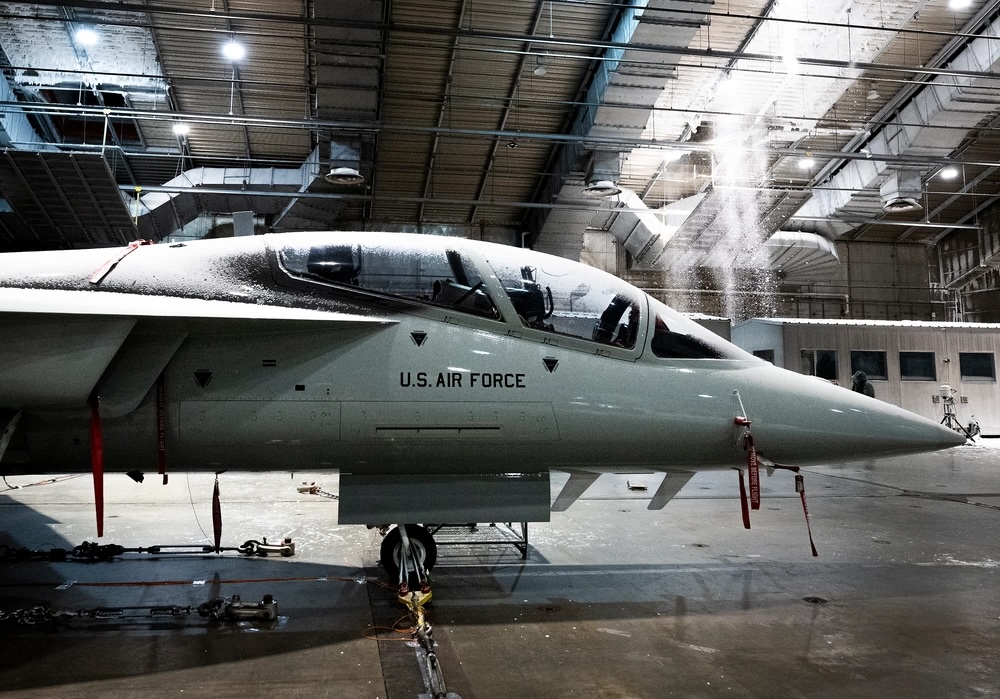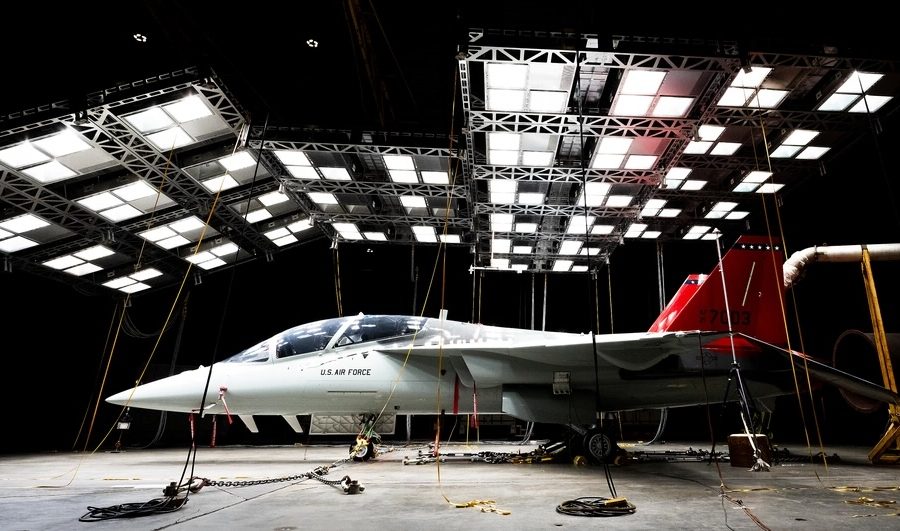The Air Force’s new trainer jet, the T-7A Red Hawk, reached another milestone in its test process when it completed a month-long extreme weather trial at the McKinley Climatic Lab at Eglin Air Force Base, Fla. on Feb. 23.
The world’s largest environmental test complex, the McKinley lab gauges how stealth bombers, trucks, and other equipment fare under extreme weather conditions. The lab can heat up to 165 degrees Fahrenheit or cool down to -80 degrees. It can create high humidity, high-altitude air pressure, solar radiation, salt spray, ice, wind, rain, freezing rain, and clouds of sand or dust.
The T-7’s trial ranged from 110 degrees to minus 25 degrees to heavy humidity conditions, according to a Feb. 27 press release. Boeing and Air Force crews performed system operations and engine runs to gauge its performance and how well its instrumentation and electronics held up under extreme weather.
“We need to know the T-7A can operate in the environmental conditions it will encounter at pilot training bases around the country,” Dr. Troy Hoeger, the T-7 Chief Development Tester with the Air Force Lifecycle Management Center, said in the release.

It takes a lot of work to raise the temperature of the 55,000-square-foot test chamber up to desert heat and then down to Arctic cold. The lab has its own staff of welders, machinists, electricians, instrumentation experts, test assembly personnel, and refrigeration operators to keep it running “like clockwork,” according to the lab’s flight chief, Melissa Tate.
The McKinley tests come nearly four months after the first T-7A Red Hawk landed at Edwards Air Force Base, Calif., marking the start of the developmental flight test campaign for the two-seat jet, which is meant to replace the sexagenerian T-38 as a trainer for fighter and bomber pilots. The goal of developmental flight testing is to evaluate changes made earlier in the development process and determine how and whether to refine the aircraft further.
The jet at Edwards is designated APT 2, while the one at Eglin is designated APT 3. Boeing and Air Force officials told reporters in September that APT 3 will be used as a mission systems testing platform after weather testing is finished. Defense News reported on Feb. 5 that supply chain issues have delayed the start of low-rate initial production to mid-2024, months later than originally planned.
The T-7 program has been marred by a series of delays involving ejection seat issues, flight controls, and other problems, as well as pandemic-related labor and supply issues. The jet’s initial operational capability is not expected until 2027, three years later than the original target of 2024. The Air Force plans to buy 351 T-7As.

Though the T-7 may still have a long road ahead, the climate tests mark the latest success for the McKinley Lab, which was originally built in the 1940s and has tested a series of aircraft stretching back to the B-29 bomber and P-51 fighter. In more recent days, the lab served as an arctic weather training facility for Airmen from nearby Hurlburt Field, Fla.
“Equipment and personnel tend to operate differently in cold climates,” one participant told Air & Space Forces Magazine in November. “This exercise allows us to adapt our equipment and learn how to navigate this environment effectively.”
